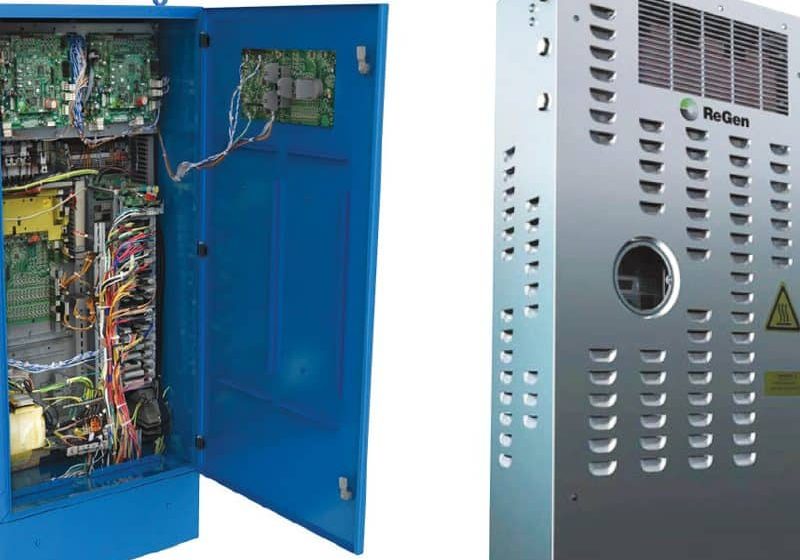The most significant activity for new elevator construction reported last year was in the Far East, with China’s 470,000 new elevator installations leading the world. Along with the growth in China’s existing elevator inventory, other nations that also experienced a significant number of new elevator installations were South Korea: 25,000; Russia: 30,000; the U.S.: 25,000; Italy: 15,500; and Germany, where 12,500 units were installed. Throughout all of Europe, 120,000 units were installed which was a significant increase over the previous year, when slightly fewer than 117,000 elevators were installed. This statistical information was included in various presentations at last year’s VFA Forum during Interlift in Augsburg, Germany, and it reflects good growth for our industry. Another positive trend was seen in our recent analysis of the industry news that we published in Elenet in 2013. Over 200 major and in many cases monumental new elevator installation and/or modernization projects were announced throughout the year. And we also saw a significant increase in participation in our Continuing Education program which we feel is a reflection of “new hires” in the field as well as additional participants in all segments of the industry.
Numerous construction-industry organizations and experts have reported they anticipate a positive trend in all construction segments, and they are saying the outlook for 2014 is brighter than it has been in recent years. The McGraw Hill Construction forecast predicts a 9% increase over 2013 for new construction starts in the U.S.
In continuing our analysis of international construction and elevator-industry statistics, the one area of our industry where we have been seeing continuing steady growth is relative to the installation of machine-room-less (MRL) elevators, which, in recent years, appear to constitute 5-6% of new elevator installations throughout most of the world. And, while it is anticipated there will be good numbers coming out for our industry this year for all equipment types, there is no doubt MRL elevators will continue to become more prevalent. In view of this, we have included in this month’s issue a focus on MRL elevators, as they will continue to constitute an ever-growing segment of the traction-elevator market.
The article “Rising to the Challenge” by Kaija Wilkinson describes how ThyssenKrupp Elevator’s original Evolution elevator system was reengineered to extend its maximum rise and speed from 80 m and 2.5 mps to 120 m and 3 mps, respectively, in the BESA Tower in Luanda, Angola. The MRL solution also turned out to be just what was needed to accommodate the building’s rooftop heliport positioned over the elevator hoistways.
Utilization of another MRL system at the right time and in the right place is also described in an article by Wilkinson on an environmentally sensitive project in Essen, Germany. In this article, you will learn how Synergy MRL elevators were the perfect solution for the vertical transportation of residents of the Pier 78 complex that was recently built in what has become known as the Green Middle Essen area of the city. Working in close coordination with the project’s architect and developer, ThyssenKrupp Elevator designed the lift system to accommodate the visual and energy-saving aspects required in this building complex.
Also published in this month’s issue is a recent interview EW Correspondent Carmen Maldacena conducted with Dr. Walter Rohregger, CEO of the Wittur Group, in which they discussed an aspect of this month’s focus topic that is often overlooked. In this article, you will read how Wittur’s engineers developed an MRL solution for existing buildings. The Wittur MRM MRL elevator-modernization package has been developed specifically to accommodate existing elevator hoistways that may have reduced overhead and pit clearances. In this article, Rohregger explains to Maldacena that such projects are no longer beyond the realm of a complete elevator upgrade.
Our final article on this month’s focus topic is by Jay Popp, executive vice president of Lerch Bates, Inc. In this article, Popp explains why he feels MRL elevators are “the backbone of the North American elevator industry” and that, today, these high-quality, energy-efficient vertical-transportation solutions are available from all elevator manufacturers. In closing, I must admit that when MRL elevators first came on the scene, I was not fond of describing them by what they did not have (i.e., a machine room). Instead, I felt they might better have been described as “space-saving” elevators or by some other attribute. However, now, after seeing how successful these products have become compared to conventional elevator systems, relative to their ability to provide more usable space in a building, I have been convinced that the moniker the industry adopted for these elevators was very appropriate. For, indeed, MRL elevators have proven the old adage “less is more” to once again be true.
Get more of Elevator World. Sign up for our free e-newsletter.








